Last time I visited the folk art museum, besides the nice folk costumes, there was a section dedicated to traditional markets, which I found not only interesting, but also educative as well. Markets these days are very different and those who have little or no knowledge of the past might learn from an exhibition like this.
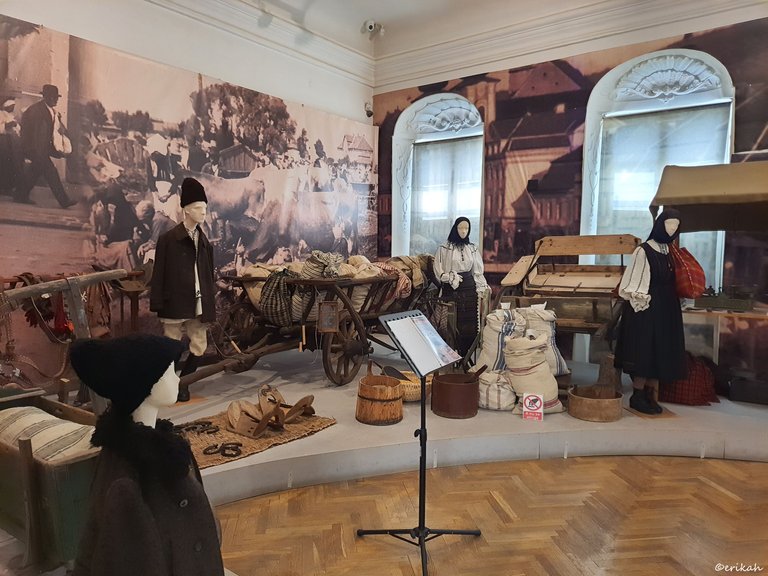
Just to be clear which time frame we're talking about, think of the 17th - (beginning of the) 20th century.
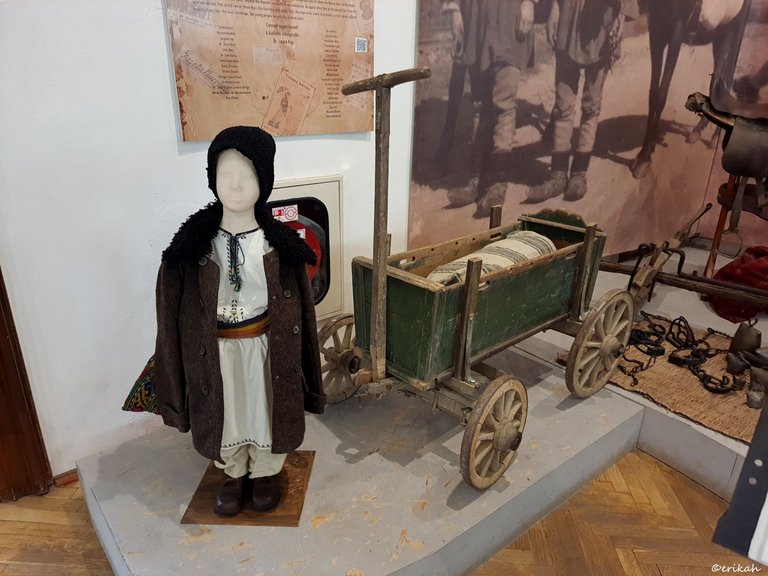
Childhood ad a very different meaning back then. Kids had duties, had to do chores and playing was never a priority. Those small chariots were built for them, to be able to pull it while transporting goods. When you look at these scenes, you can appreciate your childhood more.
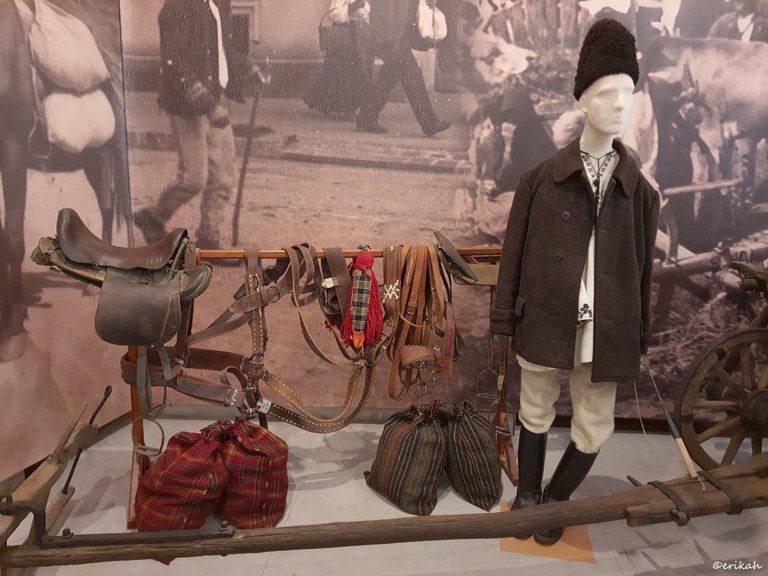
As chariots were the main means of transportation, there was a high demand for riding accessories.
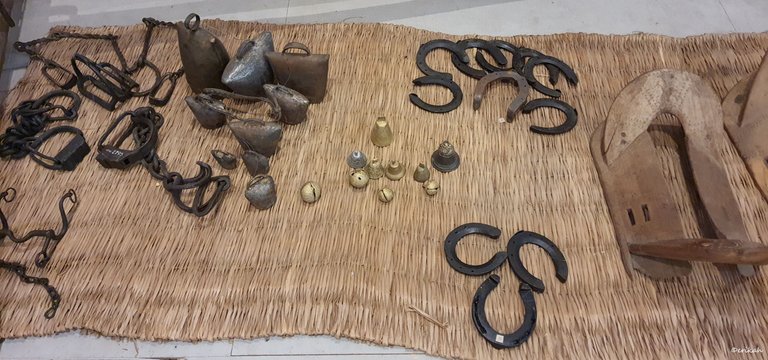
Horse shoes and bells.
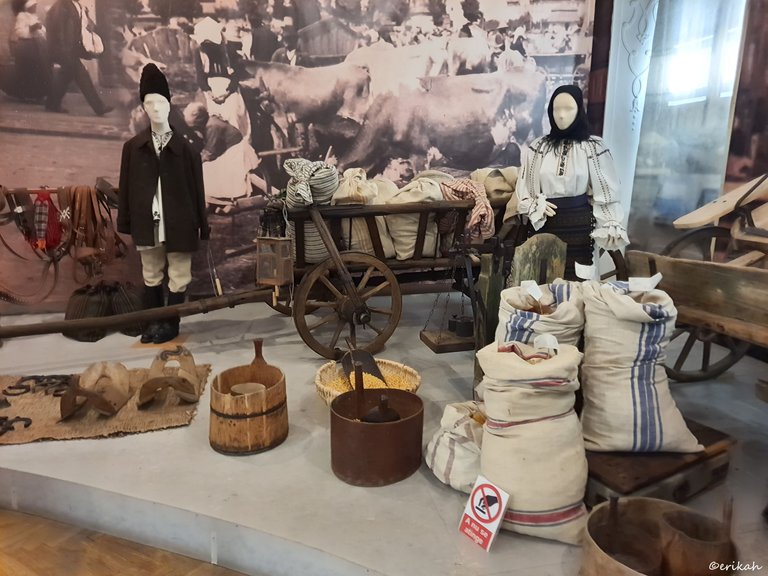

Corn and wheat was considered staple food, still is (not sure about corn) and this was the way to transport it (by chariot) and these were the pots in which they sold it. These were for measuring too.
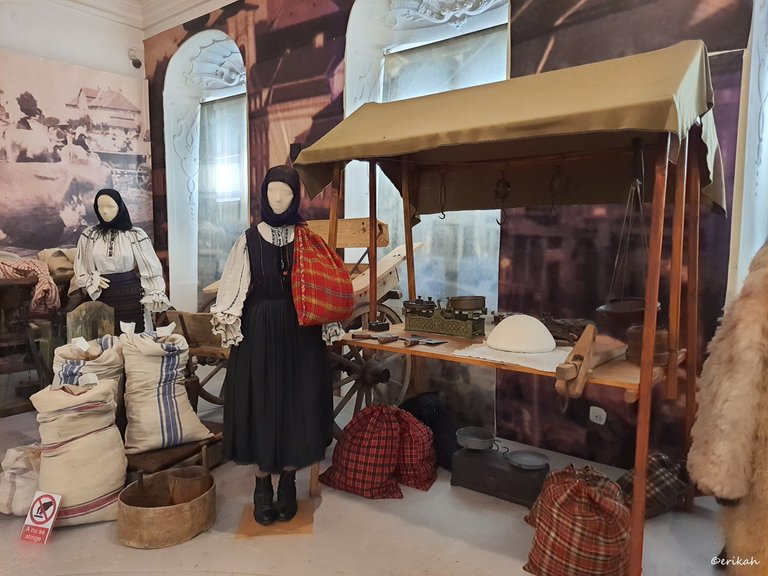
For those of you who are not familiar with the history of my country, those bags were the way people were transporting their goods. Using these bags continuously led to having a bent, curved spinal cord. Also, you can see an old scale on the table, those were used not only at the market but at home too. My grandmother had one, we still have it, but it's more like a museum object now.

Most of the kitchen tools and dishes were made of wood as that was the only available raw material to use.
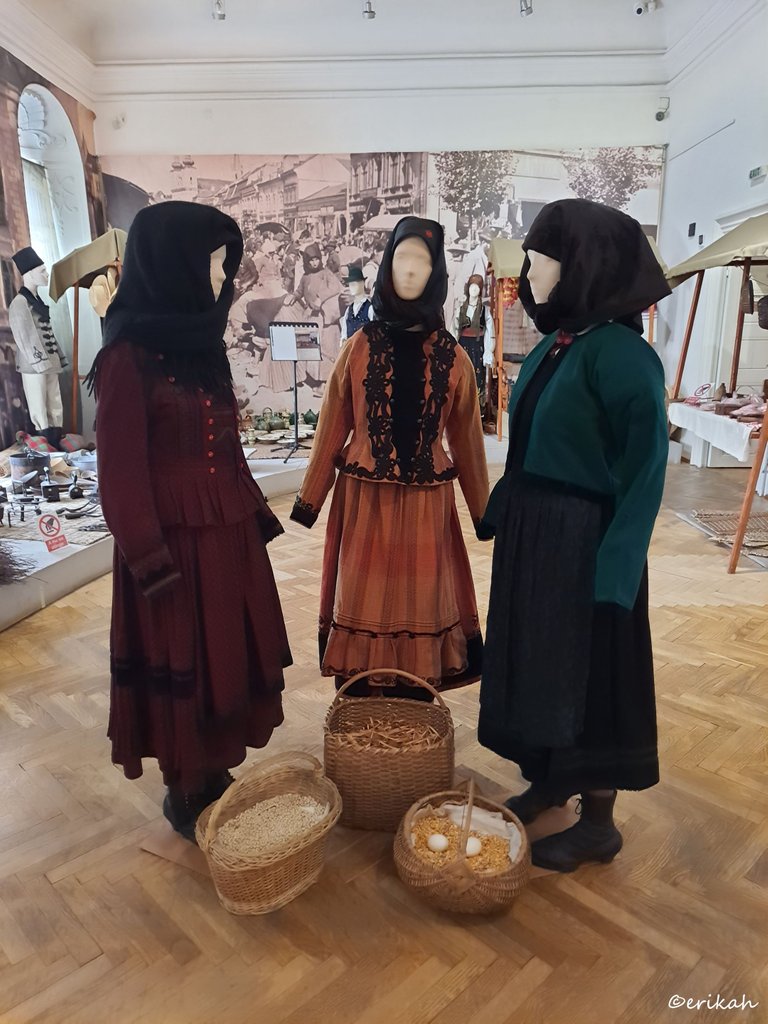
This was my favorite scene. Three women having a chat at the market, while trying to sell eggs, wheat, beans, whatever they had for sale that day. Let's not forget that there was no electricity back in those days, there was no TV, radio or newspaper, so news was spreading by word of mouth and gossip as well. The market was the perfect place for these women to meet and find out about the latest news.

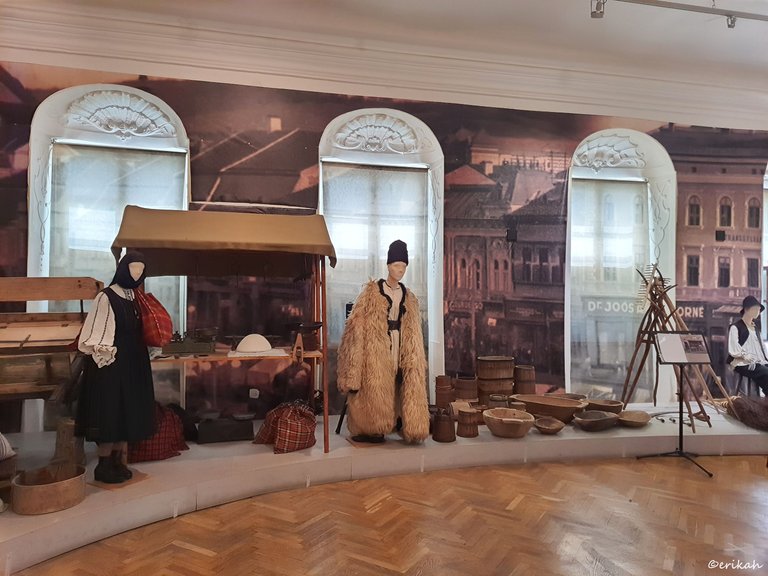

There were books and almanacs as well. I remember my grandparents had a few and I loved reading these. Information traveled slowly back in those days :) I also love old, yellow paper.
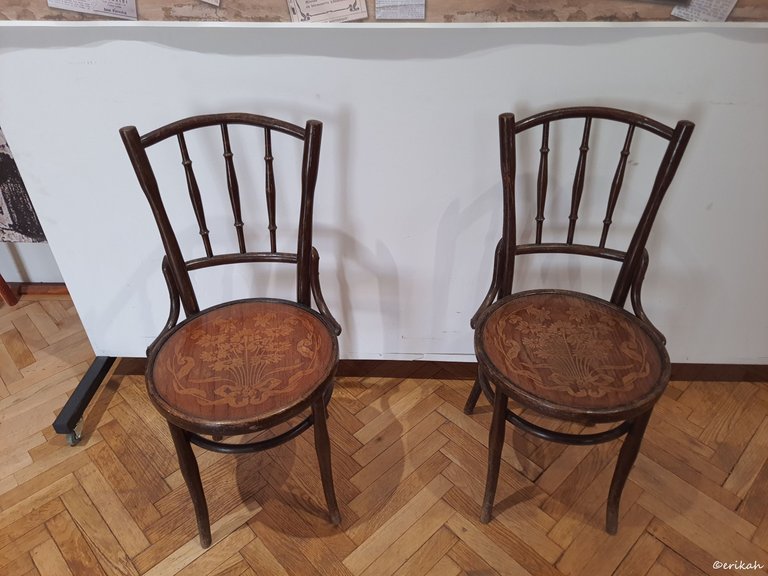
Two stylish chairs. Some similar ones you might still find here and there, but not with marquetry. These were almost certainly custom made for some nobles as the poor only had benches.
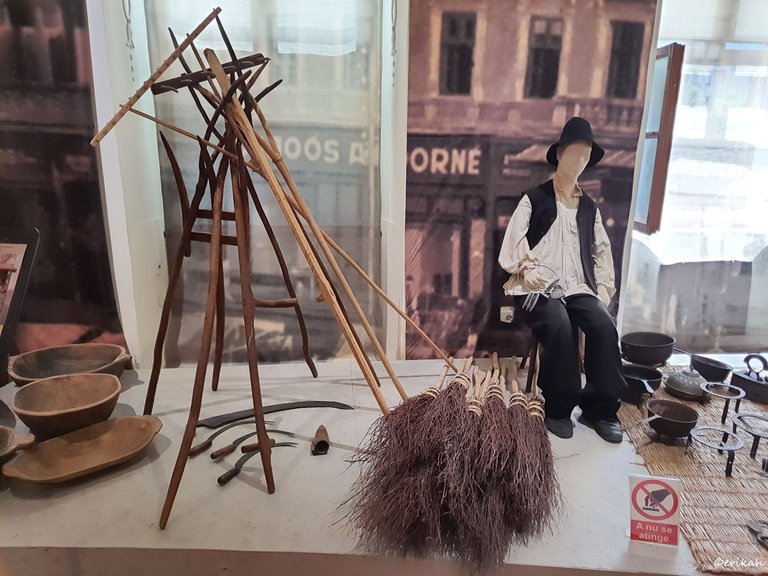
Brooms and all kinds of wooden tools they used around the house, like rakes and forks.
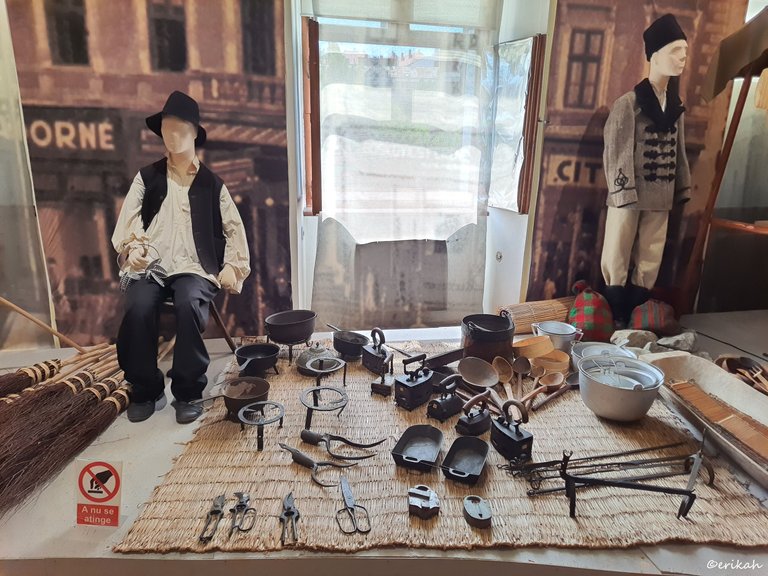
Look at these tools and imagine yourself doing the housework, chores with these tools. Cooking, ironing with charcoal and so on. I'd rather not :)
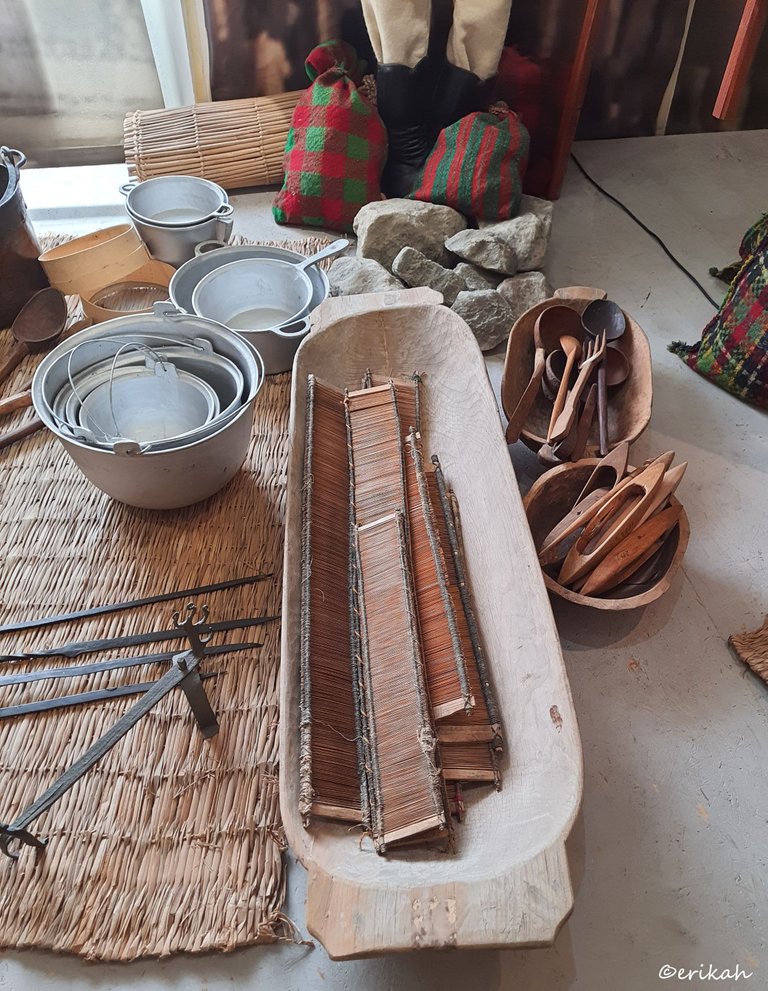
I don't even know what these long things are. The ones on the right were used for weaving.
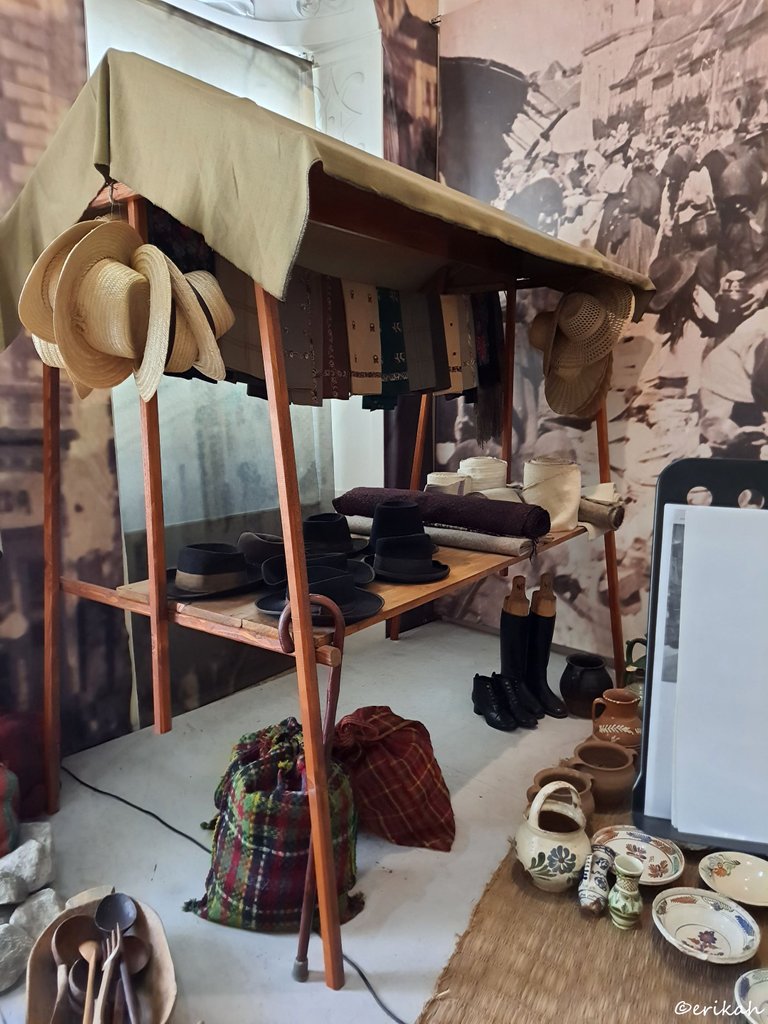
Straw hat was everyone's best friend, I mean the poor obviously. Working the fields without a straw hat was like suicide. Women wore head scarves. Old village women still do.
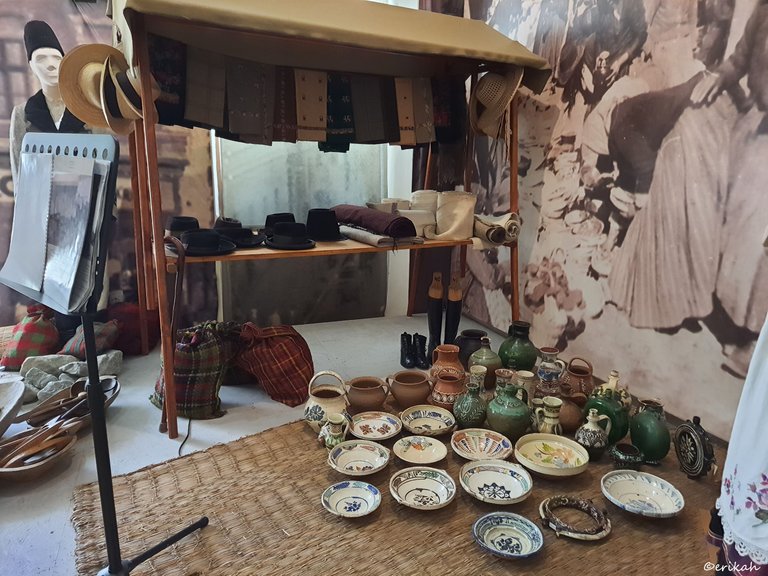
Pottery, handmade, hand painted.
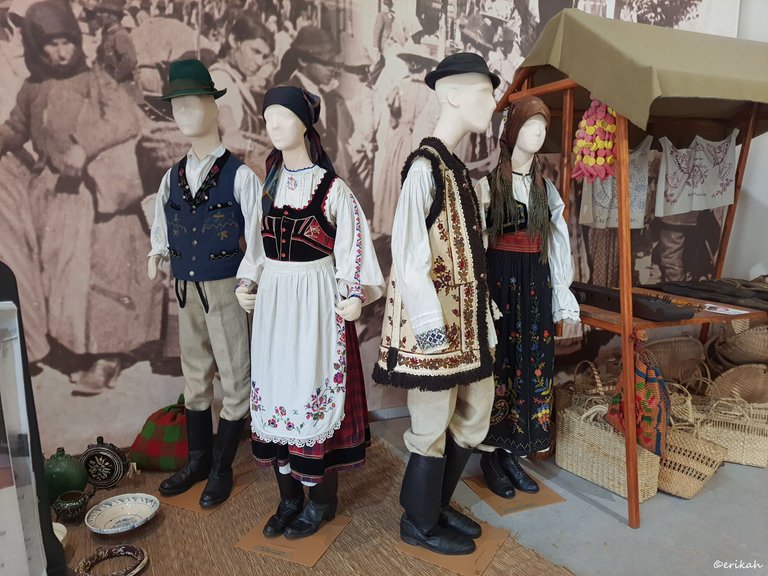
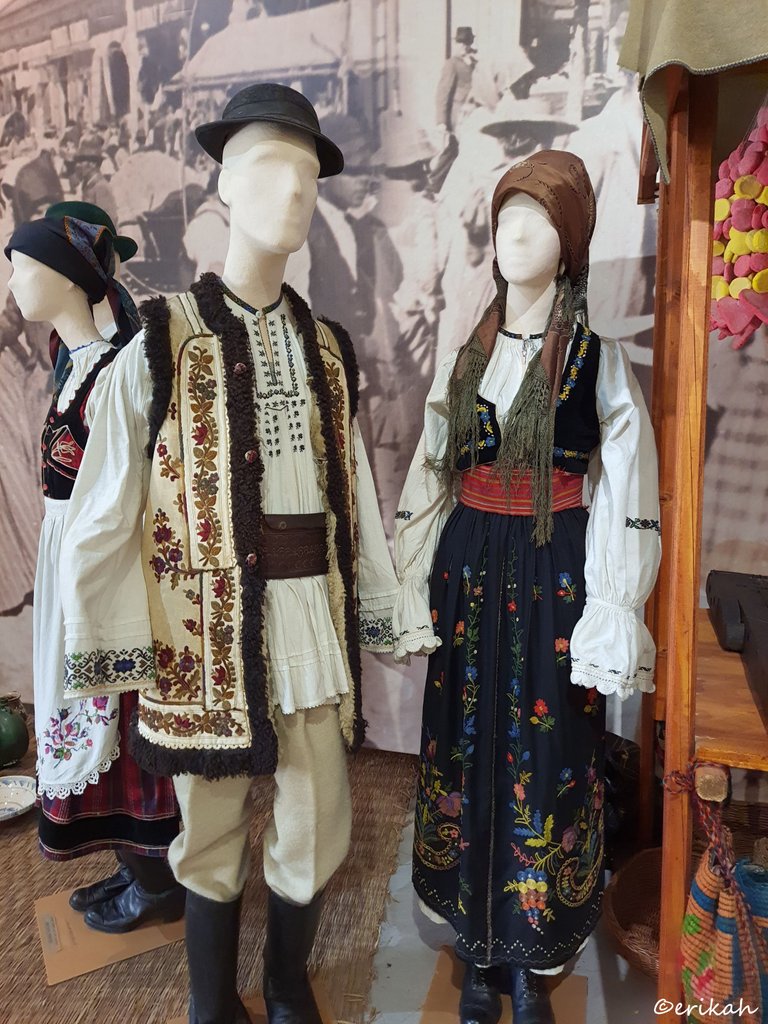
Traditional folk costumes of the region.
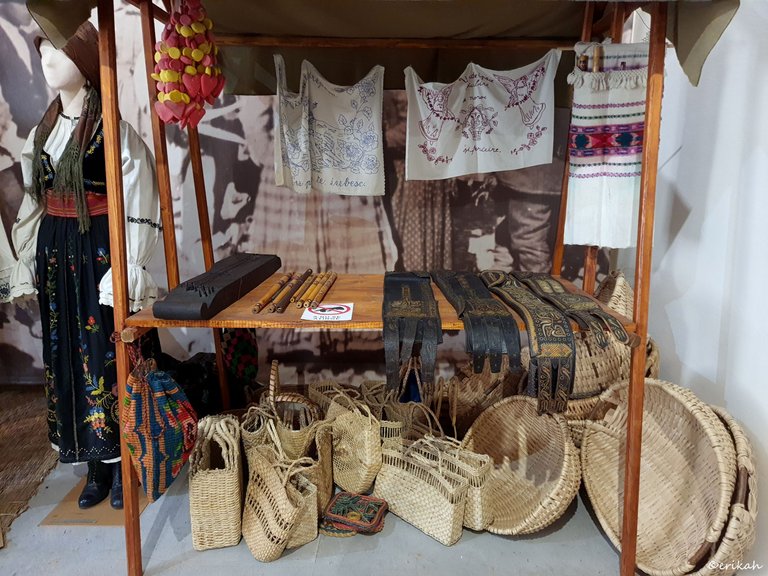
Zither, flutes, hand-embroidered leather belts, straw baskets, hand-embroidered wall cloths and so on. Everything people needed those days.
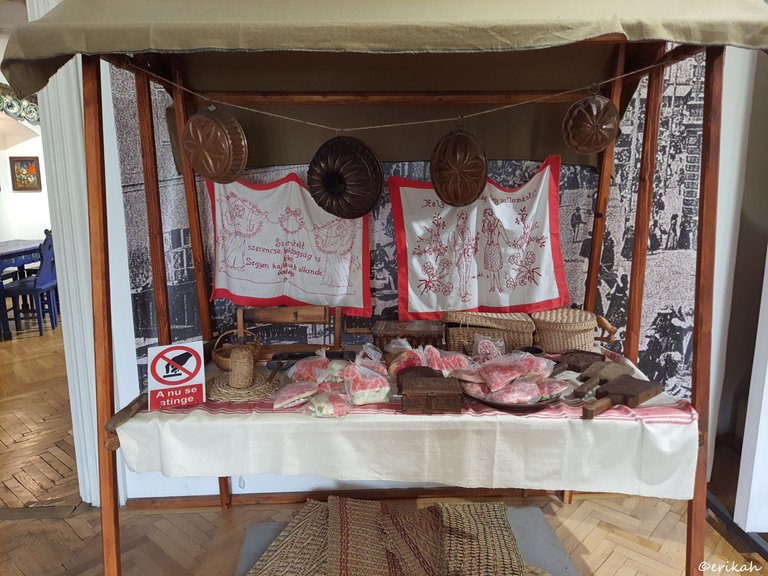
Gingerbread, which was the highlight any fair, That was the souvenir for kids and women.
Life was tough and I'm glad I wasn't born back then.

If you're a newbie, you may want to check out these guides:
- Communities Explained - Newbie Guide
- Cross Posting And Reposting Explained, Using PeakD
- Hive Is Not For Me
- How To Pump Your Reputation Fast - Newbie Guide
- Tips And Tricks & Useful Hive Tools For Newbies
- More Useful Tools On Hive - Newbie Guide
- Community List And Why It Is Important To Post In The Right Community
- Witnesses And Proposals Explained - Newbie Guide
- To Stake, Or Not To Stake - Newbie Guide
- Tags And Tagging - Newbie Guide
- Newbie Expectations And Reality

This is super cool - I could see myself rocking some of these things for sure!
I'm glad you like it.
Here in Argentina-Corrientes, we also move merchandise in sacks like these and in carts with horse-drawn carriages.
Beautiful exhibition, I appreciate that you have shared these beautiful images and all your informationHow are you, dear friend @erikah, good afternoon. What you say is very true. Visiting this type of exhibition is an opportunity to learn about history, in this case about clothing and the behavior of vintage markets.
Museums are always a good place to learn whether it is about culture or history or whatever they are displaying.
Thanks for stopping by and I'm glad you liked the post.Hello @jlufer. I'm ok, thank you for asking. How are you?
I loved this post. Thank you for sharing the traditional history of your country through this tour that you have taken us photo by photo through the museum.
I'm glad to hear that and it's my pleasure to share what I see.
Your tradition has a very wonderful history
That's a very good one
The pictures are so lovely
It's not my tradition.
That was a lovely stroll through the folk art museum and I especially liked the market vignettes. In the photo with the weaving shuttles, the long objects in the dough bowl are called reeds, also used for weaving. Wow, so much to see I have to scroll through the pics again!
Thank you for explaining what those things are. I had no idea honestly. This is why I love hive. There's always something to learn.
It is amazing how artifacts can be a great way to know about how people lived in the day. Reflecting from it, we take a moment and realized how privilege we are to live in today's society.
Yes, this is how you learn history, but unfortunately not many people go to museums these days.
And yes again, we're privileged to live now as living conditions are way better.
WOW! This is so beautiful. The clothes are super vintage type. I love them.
I'm pleased to hear that.